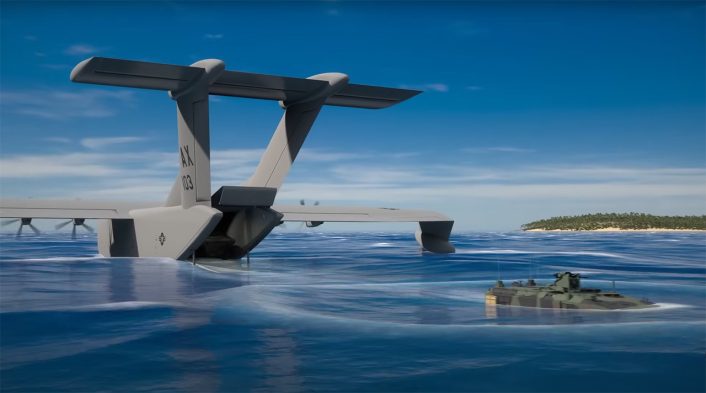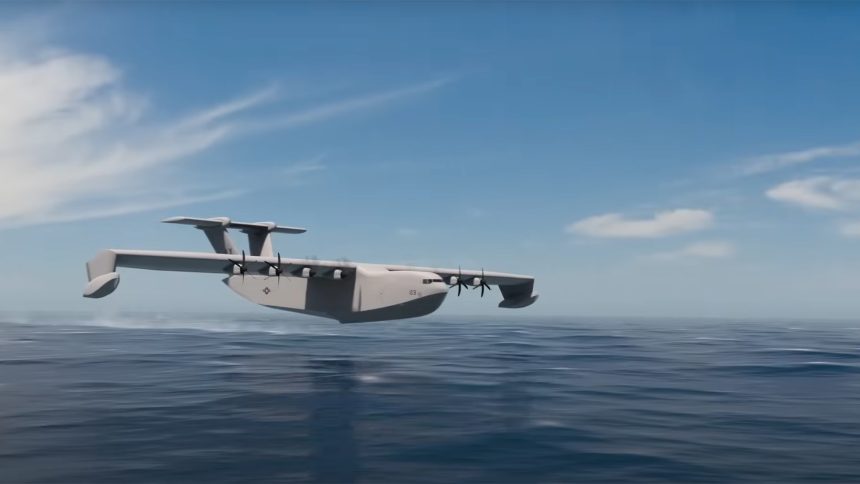Notably in the same week that a Chinese ekranoplan design emerged, DARPA announced the cancellation of its Liberty Lifter ground effect seaplane program.
First reported by Aviation Week on Jul. 7, 2025, then corroborated by Defense News on Jul.9, the Defense Advanced Research Projects Agency, commonly known as DARPA, called time on the Liberty Lifter project in June. While the program concluded that such a design would be feasible to produce, more work is needed to bridge the gaps between the aviation and maritime regulatory and operational frameworks that ekranoplans sit in.
New: DARPA has ended the Liberty Lifter program to build an experimental seaplane demonstrator.https://t.co/rG0qeRoNzv
— Brian Everstine (@beverstine) July 7, 2025
As we reported in our article about the new Chinese design, an ekranoplan uses the aerodynamic concept of ground effect to travel at high speeds just above the surface of water (or, less commonly, land). Ekranoplans are usually built as seaplanes to allow the vehicle to safely operate on the waters’ surface when below minimum ground effect speeds. We delve into the history of ekranoplans further in that article. We delve into the history of ekranoplans further in that article, and we noted that modern technologies could potentially help ekranoplans overcome some of their prior disadvantages:
With previous ekranoplan development, a major disadvantage has been the matter of flight control and safety. As they are completely reliant on ground effect while travelling at speed, any small interruption to the pocket of air created below the craft induced either by pilot error – attempting to travel at too high an altitude, or an incorrect angle of attack, for example – or unexpected interruptions in the surface below could be disastrous.
Modern simulation technology, along with huge advancements in autopilot capabilities, may allow for this disadvantage to be sufficiently mitigated to allow for routine service. Ekranoplans have even now been proposed as an electric-powered alternative to civilian ferry services, which would require safety levels well above and beyond those considered acceptable for military craft.
DARPA’s partner in developing the Liberty Lifter was Aurora Flight Sciences, a subsidiary of Boeing. Aurora’s concept resembled a traditional flying boat, featuring large wings and eight turboprop engines. Unlike most ekranoplan designs, Liberty Lifter was intended to both operate in ground effect as well as at higher altitudes up to 10,000 ft – the latter at the cost of efficiency.
The demonstrator would have roughly matched the cargo capacity of a C-130 Hercules, with the potential to scale up to a larger C-17 equivalent design in the future. Liberty Lifter would have combined the strategic and tactical airlift and logistics functions of these aircraft with the independence of not being reliant on runways. Such a concept would have extensive utility in the Pacific theatre, particularly if faced with a conflict that placed airfields at high risk of attack.
Check out our new video! Aurora’s Liberty Lifter seaplane concept for @DARPA maximizes efficiency by flying in ground effect and provides fast, heavy-lift transport that does not require an airstrip or shipping port. https://t.co/fwrbhDodWY pic.twitter.com/YNMFh2Ol22
— Aurora Flight Sciences (@AuroraFlightSci) September 24, 2024
Speaking to Defense News, a representative from Aurora Flight Sciences said: “Through the Liberty Lifter program, we were able to show the viability of the design and the feasibility of novel manufacturing techniques. Aurora is proud of the technical advancements we made through the preliminary design of Liberty Lifter, and we expect to apply these learnings to future programs.”
The reference to future programs suggests this will not be the end for U.S. ground effect designs, even if Liberty Lifter itself will go no further. There is clearly a desire for amphibious transport aircraft within the U.S. military, with the proposed but now paused C-130 floatplane development being a key example.

U.S. forces have undertaken various training sorties alongside the ShinMaywa US-2 seaplane built and operated by Japan, noting its potential for a number of maritime-focused roles. However, as an aircraft primarily designed for search and rescue tasks, the US-2 lacks a rear cargo ramp which is a vital feature for the transport role. The Liberty Lifter, for example, was envisaged to be able to carry and quickly load/offload armored vehicles as well as standardized shipping containers.









